Rockville - - - Assistant Chief Michael McAdams of the Montgomery County Fire and Rescue Service (MCFRS) completed a Master of Arts Degree in Security Studies at the Naval Postgraduate School Center for Homeland Defense and Security on March 25, 2011.
Assistant Chief Michael McAdams has risen through the ranks from a firefighter rescuer to Assistant Chief of the Operations Division. He has held multiple positions during his 26-year career and welcomes the challenge of developing the principles learned at the Center for Homeland Defense and Security (CHDS) into the fire service. McAdams is the winner of the prestigious Zimbardo Award. This award is given by the faculty of the Psychology of Terrorism course to the member of the cohort who best represents the intellectual leadership evidenced by Phil Zimbardo, a renowned Stanford University psychologist who is on the CHDS faculty.
During the intensive 18-month online and in-residence program, McAdams collaborated with homeland security officials from across the nation on current policy, strategy and organizational design challenges. He completed a thesis on measuring collaboration in fire service organizations.
“As the traditional role of the fire department changes, we’re committed to strengthening our capabilities across many critical disciplines. The CHDS program provides the platform for developing a strong and expanding national network,” said Fire Chief Richard Bowers. “The issues are wide-ranging and Assistant Chief McAdams brings an important and strategic perspective that provides a strong foundation for MCFRS.”
Twenty-nine students received degrees from CHDS as part of ceremonies at the Naval Postgraduate School. They represent a cross-section of the homeland security profession and include professionals from law enforcement, fire safety, homeland security, public health, public utilities and the military.
Thursday, March 31, 2011
Tuesday, March 29, 2011
Infant & Child Car Seat Safety Information
As Chief Bowers has stated on numerous occasions, preventing the 9-1-1 call is our top priority. What does that mean?
 For one it means helping folks to prevent fire in their home by providing fire prevention tips and going into the neighborhoods each Saturday knocking on doors, handing out tips, and checking smoke alarms.
For one it means helping folks to prevent fire in their home by providing fire prevention tips and going into the neighborhoods each Saturday knocking on doors, handing out tips, and checking smoke alarms.
As our Fire and Rescue personnel also provide ambulance service, it also means promoting healthy living habits and providing injury prevention information and programs. One of our best injury prevention programs is our Child Passenger Safety Seat (CPSS) program.
If you have young children, or grand children, please take a moment to visit our CPSS site to learn how to best keep your children safe in cars as well as schedule a child safety seat inspection/installation appointment.
Go here to learn more: Car Seat Safety Information
 For one it means helping folks to prevent fire in their home by providing fire prevention tips and going into the neighborhoods each Saturday knocking on doors, handing out tips, and checking smoke alarms.
For one it means helping folks to prevent fire in their home by providing fire prevention tips and going into the neighborhoods each Saturday knocking on doors, handing out tips, and checking smoke alarms. If you have young children, or grand children, please take a moment to visit our CPSS site to learn how to best keep your children safe in cars as well as schedule a child safety seat inspection/installation appointment.
Go here to learn more: Car Seat Safety Information
Thursday, March 24, 2011
FREE Conference for Fire - Rescue - EMS - Safety & Health Personnel
Arrive Alive & Survive 2011 Conference
Fire - Rescue - EMS -
Safety & Health
April 8-9, 2011
Montgomery County Public Safety Training Center
9710 Great Seneca Highway
Rockville, Maryland 20850
Montgomery County Public Safety Training Center
9710 Great Seneca Highway
Rockville, Maryland 20850
 |
 |
 |
Arrive Alive and Survive is a national conference for all public safety personnel. In previous years this conference has included best safety practices for the fire service. These best practices focused on dealing with all aspects of successful safety, health, and wellness programs in the fire service.
You may register online, review directions and lodging information, and view the agenda.
Presentations to include:
Keynote Presentations by Deputy Chief Billy Goldfeder to include:
- Who Is In Your Wallet? Why EVERYONE Does Not Come Home…
- The First Due Company Officer, Working Fire… “Those SOP’s Don’t Apply to Me”.
- The Role of Occupational Medicine Programs in Reducing Firefighter Morbidity and Mortality
- Overview of Emergency Driver Training
- Fire Scene Safety and Health Hazards
- Fire Chief’s Roundtable- Montgomery, Alexandria, Fairfax City, and Arlington- Discussion of their department’s current health, safety, and wellness programs.
Session topics include:
- Maintain Don’t Gain
- Flammable Liquid Response/ Ethanol Emergencies
- Chemical Suicide Response
Tuesday, March 22, 2011
Embrace Life - Always Wear Your Seat Belt
I wanted to share a really powerful video from the UK, that has been out and about for a while now, that reminds us all we should always wear our seat belt.
Embrace Life (C)2010 Sarah Alexander/Daniel Cox/Sussex Safer Roads Partnership
Embrace Life (C)2010 Sarah Alexander/Daniel Cox/Sussex Safer Roads Partnership
Monday, March 21, 2011
Smoking and Home Fires
 In light of yesterday’s tragic house fire in Potomac that has seriously injured an 85 year old man, I thought it prudent to pass along some pertinent safety tips.
In light of yesterday’s tragic house fire in Potomac that has seriously injured an 85 year old man, I thought it prudent to pass along some pertinent safety tips.If you smoke or know someone who does, it is well worth your time to review some of the links I have provided below. Smoking related fires can be prevented.
Smoking and Fire Safety
Smoking & Home Fires Campaign
Fight Fire with Facts: Careless Smoking
Stay Safe,
Bill
Friday, March 18, 2011
Public’s Help Needed In Potomac Explosion Investigation
Below is our update from late yesterday afternoon regarding the explosive device that had detonated in front of a home in Potomac.
As you scroll down, please take a look at a photo of a necklace found on the scene. Anyone with information pertaining to this incident is urged to call the Montgomery County Fire and Explosives Tip Line at 240-777-2263. Callers can remain anonymous and the tip line is available 24-hours a day.
PotomacExplosion31620112nd
As you scroll down, please take a look at a photo of a necklace found on the scene. Anyone with information pertaining to this incident is urged to call the Montgomery County Fire and Explosives Tip Line at 240-777-2263. Callers can remain anonymous and the tip line is available 24-hours a day.
PotomacExplosion31620112nd
Thursday, March 17, 2011
Let’s Not Meet By “Accident!” Remember SoberRide Program If You Have One Too Many Tonight!
Happy St. Patrick’s Day to all of you! As we all know one of the primary activities associated with this day, for those over the age of 21, is the consumption of alcohol. With that comes the danger of drinking and driving.
2011StPatrickSoberRidePosters
The women and men of MCFRS have no desire to meet any of you by “accident” this evening because you have had one too many! Of course, if you drink and drive and are involved in a crash it is really not an accident. It would be a PREVENTABLE incident!
Toward that end of preventing a needless tragedy, I wanted to make all of you aware of a fantastic program available to you if you find you perhaps should not get behind the wheel of your vehicle after an evening of celebrating.
It is called SoberRide and it is a program developed by the Washington Regional Alcohol Program (WRAP). Please see below for more information and BE SAFE this evening!
Wednesday, March 16, 2011
How Smoke Alarms Work
One of our readers, William Hatfield, sent me a link to this very cool explanation of how smoke alarms work. It is a bit technical at times but I think most all will be able to grasp the general idea.
The video was done by a college professor Mr. Bill Hammack (a.k.a The Engineer Guy). You can find more of his stuff on his web site: The Engineer Guy
Stay Safe,
Bill
The video was done by a college professor Mr. Bill Hammack (a.k.a The Engineer Guy). You can find more of his stuff on his web site: The Engineer Guy
Stay Safe,
Bill
Saturday, March 12, 2011
Put A Finger On It! Time to Check Your Smoke Alarms
Checking your smoke alarms and batteries twice a year to ensure that they are working is one of the simplest, most effective ways to reduce tragic deaths and injuries from fire. In fact, working smoke alarms nearly cut in half the risk of dying in a home fire.
The men and women of the Montgomery County Fire and Rescue Service (MCFRS) urge ALL residents to check home smoke alarms on a regular basis. Fire Fighters will be out in the community on Saturday offering to check your home smoke alarms to ensure they are working.
“Put a Finger on It!” Fire Chief Richard Bowers recommends that all residents adopt a lifesaving habit by checking your home’s smoke alarms and batteries when changing clocks twice a year. Protect your family in the event of a home fire – change the battery if it is dead or at least yearly!
The Montgomery County Fire and Rescue Service recommend that homeowners follow these tips to help prevent fires, deaths, and injuries:
* Install and maintain smoke alarms on every level of the home
* If your smoke alarm is older than 10 years, it needs to be replaced
* Properly dispose of all smoking materials
* Maintain and properly use gas and electrical appliances.
* Never leave food cooking unattended; turn off the burner if you leave.
“Put a Finger on It!” Fire Chief Richard Bowers recommends that all residents adopt a lifesaving habit by checking your home’s smoke alarms and batteries when changing clocks twice a year. Protect your family in the event of a home fire – change the battery if it is dead or at least yearly!
The Montgomery County Fire and Rescue Service recommend that homeowners follow these tips to help prevent fires, deaths, and injuries:
* Install and maintain smoke alarms on every level of the home
* If your smoke alarm is older than 10 years, it needs to be replaced
* Properly dispose of all smoking materials
* Maintain and properly use gas and electrical appliances.
* Never leave food cooking unattended; turn off the burner if you leave.
* Keep matches and lighters away from children.
* Never leave candles burning unattended.
* Develop and practice a fire escape plan.
Fire can spread rapidly through your home, leaving you as little as two minutes to escape safely. Your ability to get out depends on advance warning from smoke alarms and advance planning—a home fire escape plan that everyone in your family is familiar with and has practiced.
Remember, when you change your clock, check your smoke alarms and batteries – put a finger on it!
Friday, March 11, 2011
What I Have Learned About The Smoke Alarm
By: Daniel the Intern
Here at the MCFRS, I hear about smoke alarms almost everyday and how crucial they are to surviving a fire. Although they seem like simple, plastic devices that are stuck to the ceiling, they require a little more thought and maintenance than people give them. Here are a few things to consider regarding smoke alarms in the home.
Before any alarms are installed, consider hiring an electrician to install wires to connect all of the alarms together and to the home's electrical system (hardwired). Remember that hardwired alarms, even though they receive power from the home's electricity, need a battery backup in case the power goes out. There are also smoke alarms that can communicate wirelessly and are just as good. Once they are communicating, all of them will go off together even if only one of them detects smoke. This will dramatically decrease the time it takes for the occupants to realize a fire is in the home, especially if it is two floors away.
Another point to consider is installing both types of smoke alarms: ionization and photoelectric. Ionization are better at detecting flaming fires while photoelectric are better at detecting smoldering fires. Since no one can predict the type of fire that will start, it is suggested that both kinds are installed throughout the home. However, there are dual sensor smoke alarms, which contain both sensors and are the ideal choice.
The placement of the devices can be very influential to their response times. First of all, there must be alarms on every floor of the home. It will take too long for an alarm to go off when the fire is a floor away and that can be disastrous. Second, they should not be installed near vents or anything that is creating air movement. A vent blowing air can push smoke away and will also increase the response time of the smoke alarm. Finally, they must be placed inside and outside of sleeping areas. It is devastating when a fire starts and smoke fills the home while all the occupants are sound asleep so it is crucial these are working at all times. In fact, over half of all the American deaths in home fires “occur between the hours of 10:00pm and 7:00am, when residents are typically sleeping."
Once they are installed and working, they must be maintained. It is advised to test each smoke alarm once a month, even if they are connected to the home's electrical supply. If they use a 9 volt battery, even if they are hardwired alarms, the battery should be replaced at least once per year. To make sure all the necessary steps are taken, make sure to check the instructions supplied by the manufacturer.
A popular time to check the alarms is during daylight savings time, which happens to be this weekend.
Just hold down the button for a few seconds and if the alarm chirps, it is working. However, if they are at least 10 years old, it is strongly advised that they should be replaced. The bottom line is a smoke alarm with a dead battery is not a smoke alarm at all but a piece of plastic, and is endangering everybody in the home.
Thursday, March 10, 2011
Follow MCFRS on Social Media During Significant Weather Event
Many of you know you receive a lot of good news and information from Montgomery County Fire & Rescue via this Blog. But did you know that you can receive more “real time” updates and information from our various social media sites?
During this storm, MCFRS has posted several bits of information and updates via our Twitter and Facebook pages. You can also find our Twitter feed on the right hand side of our Fire Chief’s Blog.
Below are the links to our various sites.
Be safe out there today and tomorrow!
List of Roads in Montgomery County Subject to Periodic Flooding
Please take a moment to review the list below and see if any are streets you would potentially travel today or tomorrow. If there are some streets listed you may be thinking of driving on today, please reconsider and try an alternate route.
Plan ahead now before going anywhere today or tomorrow!
Remember, never drive through a flooded road or bridge. Turn Around - Don’t Drown and try an alternate route!
Street Flooding Hazards
Plan ahead now before going anywhere today or tomorrow!
Remember, never drive through a flooded road or bridge. Turn Around - Don’t Drown and try an alternate route!
Street Flooding Hazards
Turn Around - Don’t Drown!
Many Roads in Montgomery County Susceptible to Flooding so Consider Alternate Routes Beforehand!
If a flash flood warning is issued, act immediately. Don't wait for high water to dictate your course of action.
Know your location when you are driving. If you needed rescue, would you be able to direct emergency crews to your location? Distracted driving can lead to a situation where you are stranded and unable to direct emergency crews to you. Be alert!
- Six inches of water will reach the bottom of most passenger cars causing loss of control and possible stalling.
- A foot of water will float many vehicles.
- Two feet of rushing water can carry away most vehicles including sport utility vehicles (SUV's) and pick-ups
ROADS IN MONTGOMERY COUNTY SUBJECT TO PERIODIC FLOODING:
DOWN-COUNTY AREAS
MD 29 (Columbia Pike) at Paint Branch - N. of White Oak
MD 185 (Conn. Ave) at Rock Creek - S. of Kensington
MD 190 (River Road) at Cabin John Creek - Potomac
MD 193 (Univ. Blvd) at Sligo Creek - Wheaton
MD 586 (Viers Mill Rd) at Rock Creek - S. of Twinbrook Pkwy.
Beach Drive in Rock Creek Park - Kensington-Chevy Chase
Sligo Creek Pkwy - Silver Spring-Takoma Park
UP-COUNTY AREAS
MD 97 (Georgia Ave) at Reddy Branch - N. of Brookeville
MD 124 (Woodfield Rd) at Goshen Branch and at Gr. Seneca Creek - N. of Brink Rd.
MD 117 (Clopper Rd) at Gr. Seneca Creek - W. of Gaithersburg
MD 117 (Clopper Rd) at Little Seneca Creek - E. of Boyds
MD 355 (Frederick Rd) at Little Seneca Creek - W. of Brink
MD 121 (Clarksburg Rd) near Little Seneca Lake - N. of Boyds
MD 118 (Germantown Rd) at Great Seneca Creek - S. of Germantown
River Rd and Berryville Rd at Seneca Creek - Seneca
Blunt Road at Great Seneca Creek - S. of Brink Rd.
Davis Mill Rd at Great Seneca Creek - N. of Gaithersburg
Brighton Dam Rd at Hawlings River - NE of Brookeville
Goldmine Rd at Hawlings River - E of Olney
Zion Rd at Hawlings River - E. of Laytonsville
Hoyles Mill Rd at ford of Little Seneca Creek - Germantown, west of soccer complex
Loghouse Rd at Magruder Branch - S. of Damascus
Elton Farm Rd at Haights Branch - N. of Sunshine
Howard Chapel Rd at Haights Branch - N. of Sunshine
White’s Ferry Road and River Road - White’s Ferry
Tuesday, March 8, 2011
Video - House Fire in Rockville Yesterday
The below is from a house fire yesterday in Rockville Fire Station #23’s first due response area in the 5900 block of Coral Sea Ave. There was heavy fire involvement in the attached garage. MCFRS Fire Fighters made an aggressive attack holding the fire to the garage area.
There were no injuries. A total of 3 adults and 1 child were displaced as a result. The cause of the fire is undetermined and under investigation at this time. All media outlets are welcomed to use the video.
Video by LT Erik Couse, MCFRS
There were no injuries. A total of 3 adults and 1 child were displaced as a result. The cause of the fire is undetermined and under investigation at this time. All media outlets are welcomed to use the video.
Video by LT Erik Couse, MCFRS
Friday, March 4, 2011
TGIF Fire Safety Tip
I am going to copy and paste below an important message from the United States Fire Administration (USFA) as it relates to smoke alarms. It is a message that everyone out there needs to hear! So please take a moment and read below and click on the links for more information. What you learn could save the lives of you and/or your loved ones.
Please us the power of social media and the internet and forward this on to all who you know and care for!
Have a safe weekend!
Bill
Every year, approximately 2,600 Americans die in home fires. Over half of these deaths (52%) occur between the hours of 10:00pm and 7:00am, when residents are typically sleeping.
Smoke and toxic gases from a home fire are as deadly as heat and flames. Just two or three breaths of toxic smoke can render you unconscious. In addition, smoke obscures vision, decreasing your ability to escape.
Smoke alarms save lives, prevent injuries, and minimize property damage by detecting fires early and alerting residents, allowing crucial time to escape. The risk of dying from a fire in a home without working smoke alarms is twice as high as in a home with working smoke alarms.
To find out what type of smoke alarms are available for your home, including where to install and how to maintain them, visit Focus on Fire Safety: Smoke Alarms on the U.S. Fire Administration's website.
Please us the power of social media and the internet and forward this on to all who you know and care for!
Have a safe weekend!
Bill
Every year, approximately 2,600 Americans die in home fires. Over half of these deaths (52%) occur between the hours of 10:00pm and 7:00am, when residents are typically sleeping.
Smoke and toxic gases from a home fire are as deadly as heat and flames. Just two or three breaths of toxic smoke can render you unconscious. In addition, smoke obscures vision, decreasing your ability to escape.
Smoke alarms save lives, prevent injuries, and minimize property damage by detecting fires early and alerting residents, allowing crucial time to escape. The risk of dying from a fire in a home without working smoke alarms is twice as high as in a home with working smoke alarms.
To find out what type of smoke alarms are available for your home, including where to install and how to maintain them, visit Focus on Fire Safety: Smoke Alarms on the U.S. Fire Administration's website.
Thursday, March 3, 2011
Clothes Dryer Cleaning Day – Preventing A Potential Fire In My Home!
Recently, I spent an off day doing something that I have advised all of you to do over the past couple of months – cleaning in and around my clothes dryer. I last did this a little over a year ago and it is something that you should do at least once a year.
As you can see by the pictures below, there was a ton of lint build up in, on and around my clothes dryer. These pictures show why it is very important you take time to clean both inside and outside the clothes dryer.
A couple of pictures show what happens to the inside of your pipe that runs in and just outside your dryer (Fig 1) that carries the hot air, and lint, out. The next photo (Fig 2) shows the inside of the flexible duct that connects to your dryer pipe and then connects to another pipe that usually runs to the outside of your house.
In the next photo (Fig 3) you can see the cleaning device I used to run up into the pipe and dryer and the large amount of lint I pulled out of the dryer. These photos clearly show the large amount of lint that builds up and can, when heated up by the hot air of the dryer, actually ignite and catch fire! The more the build up, the better chance for ignition and then – a fire in your home!
A couple of the photos (Fig 4 & 5) clearly show just how dusty and dirty the back of your dryer and the floor behind and underneath it can become. This also can create problems and hazards and you need to make sure you clean these spots as well!
For more tips please go here: Clothes Dryer Fire Safety Tips
As always Be Safe!
Bill
As you can see by the pictures below, there was a ton of lint build up in, on and around my clothes dryer. These pictures show why it is very important you take time to clean both inside and outside the clothes dryer.
A couple of pictures show what happens to the inside of your pipe that runs in and just outside your dryer (Fig 1) that carries the hot air, and lint, out. The next photo (Fig 2) shows the inside of the flexible duct that connects to your dryer pipe and then connects to another pipe that usually runs to the outside of your house.
In the next photo (Fig 3) you can see the cleaning device I used to run up into the pipe and dryer and the large amount of lint I pulled out of the dryer. These photos clearly show the large amount of lint that builds up and can, when heated up by the hot air of the dryer, actually ignite and catch fire! The more the build up, the better chance for ignition and then – a fire in your home!
A couple of the photos (Fig 4 & 5) clearly show just how dusty and dirty the back of your dryer and the floor behind and underneath it can become. This also can create problems and hazards and you need to make sure you clean these spots as well!
For more tips please go here: Clothes Dryer Fire Safety Tips
As always Be Safe!
Bill
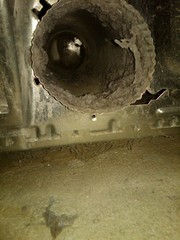 |
| Fig 1 |
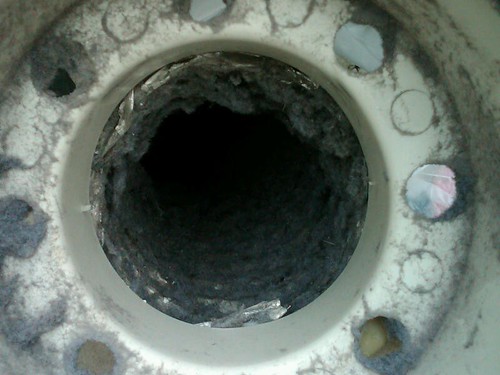 |
| Fig 2 |
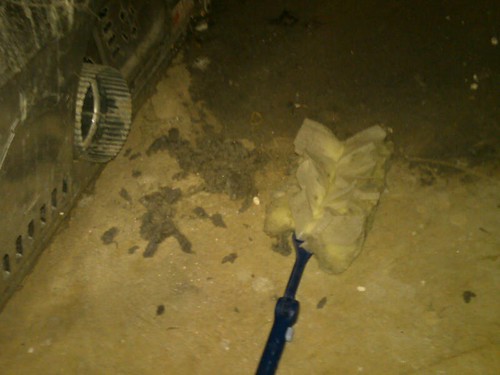 |
| Fig 3 |
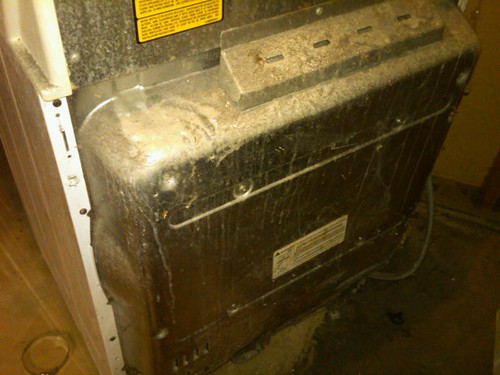 |
| Fig 4 |
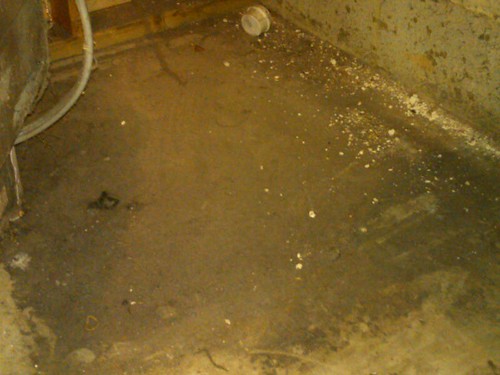 |
| Fig 5 |
Tuesday, March 1, 2011
MCFRS Promotions
Congratulations to the following personnel who have been promoted to the rank of Master Firefighter. Well done!
o Craig T. Lauret
o Daniel A. Ballantine
o Daniel C. Schaefer
o James A. Snyder
o Jason M. Smith
o Jeffrey R. Kane
o Joseph A. Dingle Jr
o Kristy M. Furst
o Mark L. Arnold
o Michael J. Haba
o Ryan A. Keyser
o Shelley M. Wheeler
o Craig T. Lauret
o Daniel A. Ballantine
o Daniel C. Schaefer
o James A. Snyder
o Jason M. Smith
o Jeffrey R. Kane
o Joseph A. Dingle Jr
o Kristy M. Furst
o Mark L. Arnold
o Michael J. Haba
o Ryan A. Keyser
o Shelley M. Wheeler





